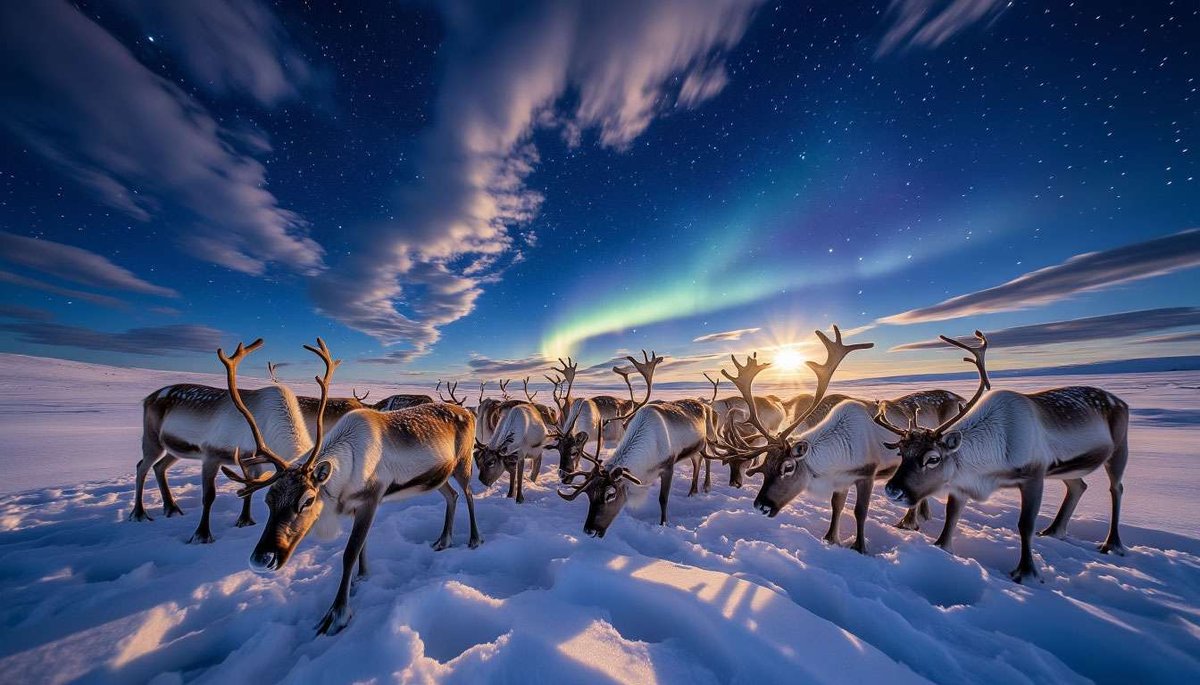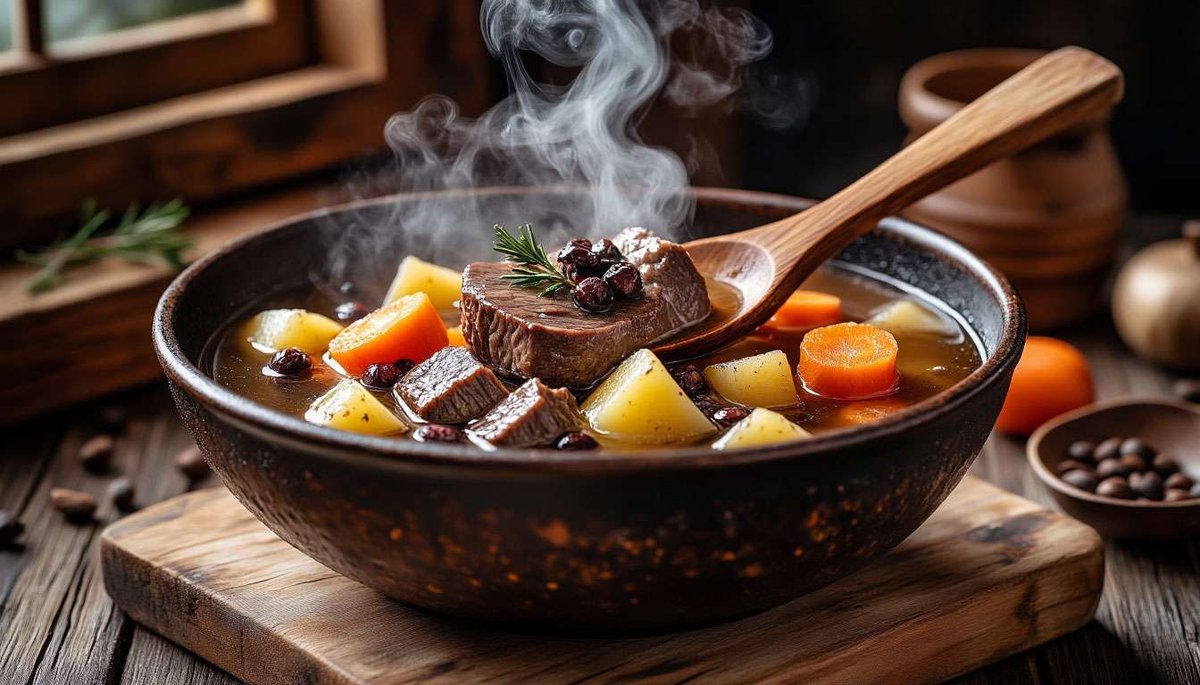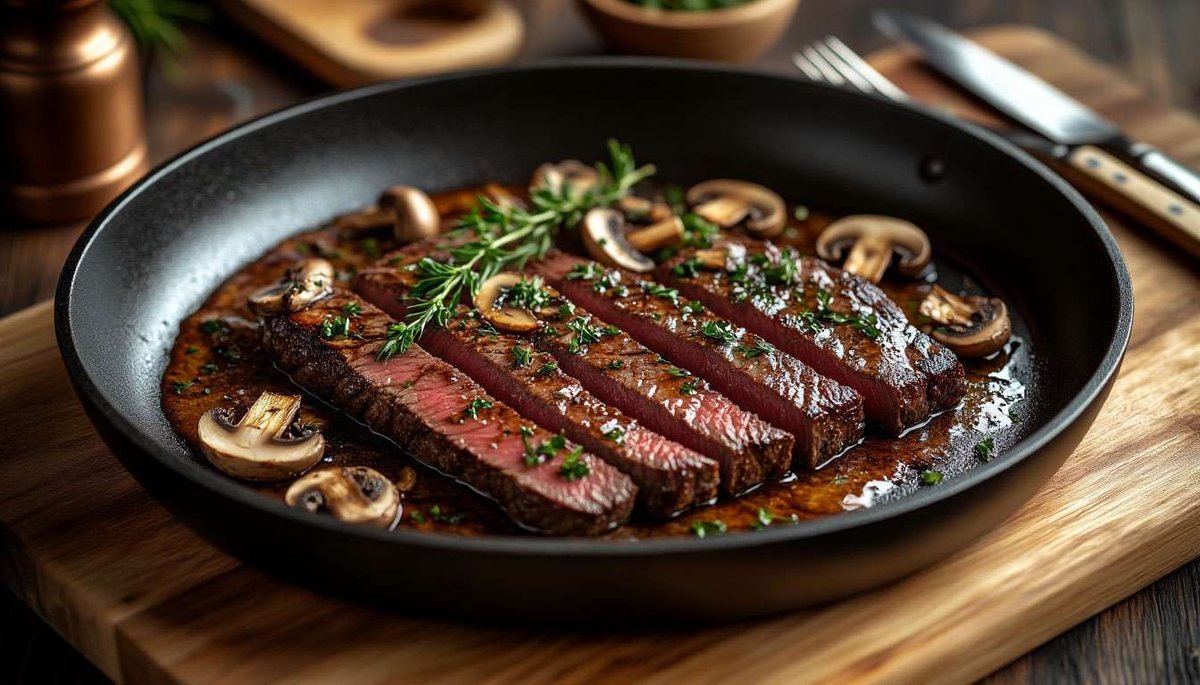Gifts of the tundra: venison, moose meat and Sami flavours of Northern Norway

In the latitudes beyond the Arctic Circle, mountain pastures give way to tundra, and the rein, or reindeer, reigns supreme. Its meat has fed the nomadic Sami people for centuries and has now become a delicacy served in restaurants with views of the northern lights. The largest forest giant, the elk, lives nearby. Together, they form the "red gold" of the North – meat that can warm you up in temperatures as low as -30°C and surprise you with its complex, slightly sweet taste.
How does the meat of wild and semi-domesticated reindeer differ?
Wild reindeer feed on reindeer moss, Arctic grasses and lichens; their meat is dark burgundy with thin streaks of fat and a bright metallic aftertaste. Semi-domesticated Sami reindeer "graze on their own" but are gathered twice a year in corrals for herd counting; their diet is the same, but they experience less stress, so the fibres are more tender and the flavour is milder. Both varieties are rich in omega-3 and iron, but wild reindeer has a distinct "forest" aroma. On restaurant menus, villrein = wild, tamrein = domestic, both certified by the Arktisk Kvalitet brand.
How does the moose hunting season affect gastronomy and what should tourists try?
The hunting season opens on 25 September and lasts until the end of October. The meat arrives in restaurants within a week, and chefs prepare "elg-special": bone-in steak, slow-roasted shoulder or minced burgers. Moose meat is leaner than venison, rich in iron and zinc, and tastes similar to beef with a hint of game. In Tromsø, visit Hildr Gastro Bar for elgstek with lingonberry sauce and root vegetable purée; in Oslo, try Statholdergaarden for moose carpaccio with pine nuts.
What is Sámi bidos soup and why is it called the "sun festival dish"?
Bidos is made from venison cooked with large pieces of carrot, potato and onion in a fragrant bone broth. The dish is traditionally served on the Sami national day on 6 February or at weddings, where it symbolises the hospitality of nomadic peoples. The secret to its flavour lies in slow simmering over an open fire and the addition of juniper twigs, which give it a light pine aroma. You can try authentic bidos at the Steike Godt lavvu restaurant (Karasjok) or at the Riddu Riđđu festival in July.

How is finnbiff different from other venison stews and how is it prepared?
Finnbiff is thinly sliced, partially frozen reindeer meat (chips) fried with onions and mushrooms and stewed in thick cream with juniper. The texture is similar to a very tender stir-fry, and the cream softens the gamey aftertaste. The dish was invented by loggers in Finnmark: thin slices cooked quickly over a kerosene lamp. Today, finnbiff is served with mashed potatoes and celery root; try it at Fiskekompaniet (Bjørnes) or make it at home by purchasing frozen venison "petals" at Coop Mega.

What environmental principles govern the hunting and sale of game meat?
Quotas are set by the Statskog directorate: each municipality receives a hunting limit based on herd monitoring. Hunters are required to complete the "Jegerprøven" course and register their catch via an app. Meat is only allowed to be sold after veterinary inspection; batches are marked with the "Godkjent Vilt" stamp. This guarantees that it is free of trichinella and heavy metals. For tourists, there are "jaktpakke" licences with a guide; trophies can be taken away vacuum-packed, but export outside the EEA requires a certificate from Mattilsynet.
Where can I buy reindeer and moose meat retail and how do I cook it at home?
In Northern Norway, Arven Gårdsmat farm shops and the Mathallen chain (Tromsø, Bodo) are popular. Look for reinsdyrfilet (venison fillet), elgbiff (moose steak) and medister sausages made from a mixture of venison and pork. Cook quickly: 2 minutes per side at 200°C and rest under foil; internal temperature = 57°C for medium-rare. Use coarse salt, green pepper, and serve with parsnip purée and a sauce made from lingonberries and aquavit. Game likes moderate heat and short cooking times: this brings out the sweet juices without a "gummy" texture.
Northern game is the taste of the endless tundra and the smell of a campfire at the entrance to a lavvu. Venison has a light nutty flavour of berry moss, elk has the noble density of the forest, and Sami recipes combine these notes with coniferous and berry accents. To visit the north and not try finnbiff or bidos is to miss out on part of Norway's cultural code. Plan your trip for September-October, when restaurants are full of fresh game; order a plate of reindeer meat under the northern lights and feel the true heart of the Arctic beating in every warm bite of red





2 comments
Log in to leave a comment